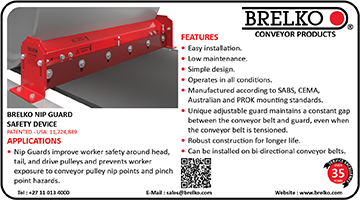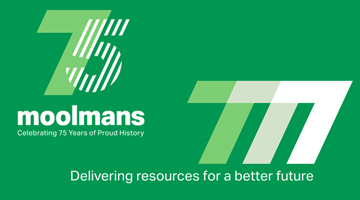By Johan von Landsberg, Technical Manager at Mining and Energy Acuity (MEA)
Copper is a critical component in solar power systems, electric vehicles, battery storage, and the infrastructure that supports the renewables ecosystem. It’s one of the driving forces behind the accelerating global move to clean energy, and without it, there is no energy transition. Likewise, without ongoing innovation in explosive practices that push boundaries in what mines can achieve, the industry will struggle to go further and deeper in extracting this precious resource as it becomes increasingly difficult to access.

Tomorrow’s copper reserves will be found further down in more geologically complex and far less forgiving environments than the shallow, high-grade deposits to which the world has become accustomed. Unlocking them will depend on precision blasting techniques that can operate safely and effectively under extreme conditions.
From procurement and storage to transport and site-specific consultation, the management of explosives in these high-stakes environments must evolve in line with rising environmental, safety, and production demands.
The world is fast approaching the ‘copper cliff’
Expert forecasts place copper on a direct collision course with skyrocketing demand. According to the Global Critical Minerals Outlook 2025 report by the International Energy Agency (IEA), copper is expected to face a 30% deficit by mid-2030, even if every announced project successfully comes online.
Grades are falling, capital costs are climbing, and discovery rates have slowed substantially. Declining ore grades mean operators must excavate and crush significantly more material to deliver each tonne of metal, raising energy consumption, and forcing concentrators to handle higher volumes of waste. Brownfield expansions offer quick relief, yet even these options carry heavier price tags than in the past.
One major issue lies with the geological complexities and logistical challenges associated with breaking hard rock at depth. The deeper a deposit lies, the tougher the surrounding host rock, the higher the natural ground stress, and the narrower the margin for error.
Advanced blasting practices represent a sustainable solution
An ideal lower-cost, high-efficiency method for offsetting lower grades and the spiralling costs of extracting hard-to-reach copper is to ensure that every detonation extracts the maximum amount of copper possible while using the least amount of material.
For example, electronic initiation now lets us choreograph each blast with a degree of control unimaginable just a few decades ago. Working closely with explosives partners, copper mines can set up blasts to fire individual holes with micro-precision. In doing so, they can align shock waves to fracture ore cleanly and taper off before reaching the host rock.
The immediate gains include less waste rock that enters the mill, and vibration levels that remain comfortably inside community and regulatory thresholds – something that is increasingly becoming a critical factor in keeping licences to operate secure.
That precision is carried to the loading bench as well. Because modern bulk emulsions arrive as a base matrix and sensitiser, explosives experts can adjust density on demand to mirror the geology. Tougher surfaces call for a denser mix, and fractured zones need a lighter touch that prevents over-break and excess fines (very small fragments created when the rock is broken). One product stream, mixed on site, trims hazardous-goods mileage and pares back the carbon footprint tied to every kilometre of haulage.
Meanwhile, at depth, long runs of signal wire snag on muck, add hours to cycle times, and raise misfire risk. But by shifting to wireless detonators, we can strip out that delay and fire complex patterns in a fraction of the set-up time. Less crew exposure at the face and fewer consumables translate directly into lower unit costs – savings that compound with every bench a mine sinks.
Finally, stress-relief pre-conditioning can substantially reduce total material use. Before the main shot, a light energy curtain fractures high-stress zones so the production blast can do its work with fewer kilograms in the hole, making it more cost-effective to go deeper in search of hard-to-reach copper deposits.
Taken together, these practices, with guidance from an experienced explosives services provider like Mining and Energy Acuity (MEA), effectively replace the blunt force methods of past decades with scalpel precision. This approach extracts more metal per blast, burns less fuel per tonne, and keeps environmental footprints within a margin that investors and regulators increasingly demand.
For an industry staring down a 30% supply gap by the next decade, this efficiency has become a critical need.










